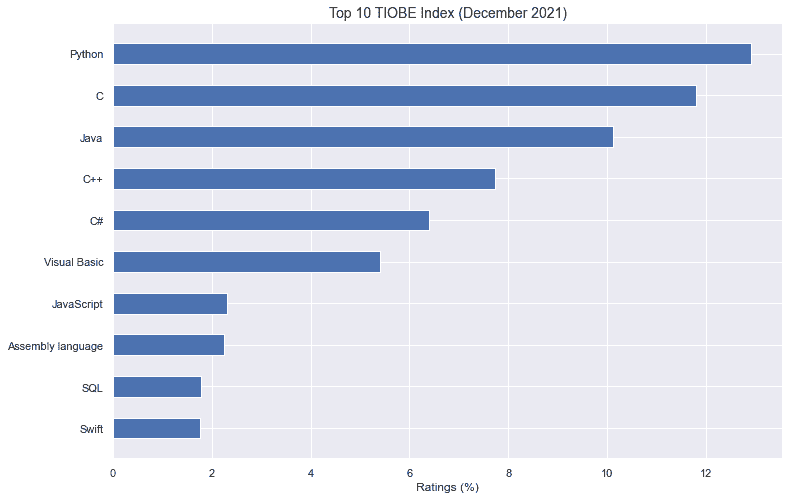Is Data Science Hard to Learn?: The Data Science domain is evolving and also presenting a lucrative career opportunity. While the conventional career choices continue to rule, with the growing proliferation of Data Science and allied technologies like AI, ML, and Big Data, many students and professionals are now transitioning into the data domain. This blog covers some of the burning questions in aspiring Data Scientists’ minds.
Whenever you start exploring the prerequisites to become a Data Scientist, a common question that comes to mind is:
- What programming languages do you need for Data Science?
- What technical skills do you need to acquire to become a proficient Data Scientist?
- Are there any other prerequisites to becoming a Data Scientist?
This blog covers some of these questions along with others that often hover in the mind of an aspiring Data Scientist. With these questions and answers, you can find the right path to becoming a successful Data Scientist.
The Relevance of Programming Language in The Learning Process of Data Science
Well, it’s a fact that to interpret and use different Data Science tools, one needs to know certain programming languages like R, Python, and SQL.
- Python is a programming language used for scripting
- R is a statistical language
- SQL is used for managing data in a relational database

Python finds multiple applications, and its use case is not merely limited to Data Science. Machine Learning, Artificial Intelligence, and Big Data use Python. If you are not well acquainted with these programming languages, enrolling in a crash course on programming languages is easy. Understanding Python gives you a competitive edge over others.
Do Data Scientists Need to Code?
Even though you might not need to code regularly, knowing coding is important. The amount of coding Data Scientist needs depends on their job profile. The following examples highlight the same:
- A Data Scientist has to work on creating production code using Ruby on Rails or Java
- Analysis scripting is done using R or Python.
- Creating product prototypes using Python.
Some of the Programming Languages that Data Scientists Need to Know Are:
Python
It is a universal programming language. Not only is it easy to learn, but it comes with several supporting libraries that make its implementation easier and faster. Brainstation’s 2019 survey highlighted that Python is the most widely used programming language by Data Scientists.
R
It is an open-source programming language. It is an offshoot of the S programming language. It finds application in statistical analysis and predictive analytics. Thus making it a programming language for individuals who want to pursue their careers in the data domain.
SQL
SQL, or “Structured Query Language,” has long been used for retrieving data. It is used for managing data in a relational database. It is easy to learn. Although SQL is not of much relevance when it comes to the analytical part, however, when it comes to managing structured data, then SAL plays a pivotal role.
In addition, there are other programming languages that one can add to their checklist if one wants to excel in Data Science
- MATLAB
- Julia
- Scala
- Java
How hard is it to get into data science?
The prospects of growth in the data domain depend on several factors. Individuals who are willing to learn and are constantly acquiring knowledge in this field have fair prospects of growth and excellence.
Acquiring the right skill sets can simplify your learning journey. Whether you are a working professional or someone who is willing to excel in the data domain, acquiring certification in Data Science can give the right impetus for growth in individuals.
There are several data science courses that target beginners. These courses are structured in a way that assures simplified learning while exposing the practical applications of the concepts. Eventually, ensuring a seamless transition of both tech and non-tech background students into the data domain.
What Skills Do You Need to Be a Data Scientist?
A successful Data Scientist needs to acquire skills in certain niches. The different skill sets one needs to acquire to be proficient in the data domain are highlighted below:

Mathematics and statistics
For the Data Scientist, it is important to have a strong foundation. Businesses with a data-driven approach expect Data Science professionals to understand the different statistical approaches, including statistical tests, distributors, calculus, and linear algebra. Hence expertise in mathematics and statistics is paramount.
Machine learning
While it’s not necessary to be proficient with Machine Learning, having a level of familiarity with Machine Learning methodologies will eventually help in the Data Science learning process. Decision trees and logistic regression are key elements that find application in Data Science.
Programming language
The next skill set that a Data Scientist possesses is programming language knowledge. We have already mentioned above that to become a Data Science expert, one needs to know different programming languages like Python, R, and SQL.
Data Visualization
Another key skill set that a Data Scientist must have is breaking down complex data and figuring out important insights. Eventually, a Data Scientist should be able to present this information using different Data Visualization tools like bars, charts, graphs, and others.
Expertise in the Non-technical Domain
Good communication skills
Data Scientists should be well-versed in a programming language and effectively communicate their inferences to a person with non-tech background. Whether you are disseminating the information to the team or your client, effective presentation and communication of information make a lot of difference in the project’s outcome.
Even Data Science has certain specifications which require a technical bent of mind. However, this doesn’t mean that an individual not well acquainted with Data Science concepts cannot pursue a successful career in this field. You only need the right platform and guidance to understand and implement this technology on the ground level. Hence, enrolling for the best Data Science Course will be the right move. You can also check our other blog – How to Become a Data Analyst with No Experience.
Wrapping it up !!!
This was the basic information on key requisites to becoming a Data Science professional. You must first acquire all the skill sets required to become an expert Data Scientist. Having basic knowledge and expertise in the above-mentioned domains will help you excel as a Data Scientist.
FAQs
- How Much Time Does It Take to Learn Data Science?
The duration of the course may vary from weeks to months and even a year. Moreover, if you have enrolled in the self-paced learning program, then the course duration depends on the individual’s learning capabilities.
- Can I Get a Data Scientist Job as a Fresher?
Yes, you can make a start as a fresher. However, joining the Data Science Course for Beginners will give you better exposure and growth opportunities.
- If Data Science is in Demand, Why is it so Hard to Get a Data Scientist Job?
One of the common mistakes aspiring Data Scientists make is to rely only on conceptual expertise. Contrary to this, one needs to focus on developing a strong work portfolio to succeed as a Data Scientist. Internships are also significant here, and participating in bootcamps and hackathons gives your career exposure to real-world set-up and networking, thus making it easy for you to grow professionally.
- Is the Data Science Job Market Really Dead?
Not really. In fact, the Data Science market is expanding. With its multidisciplinary applications, the demand for Data Scientists is witnessing a skyrocketing surge.
- How can I become a Data Scientist?
The best Data Science Training and Certification online course can help you acquire expertise in this domain. Moreover, if you want to land a well-paying job, then it is advisable to choose a Data Science Job Guarantee Placement Course online. These courses are in coherence with the industry’s demand, thus helping you easily slide into the real-world setting.
- How do I Know if Data Science is Right for me?
If you are really aspiring to make a career in Data Science, then enrolling in a Data Science course is a must. Moreover, companies are looking to hire individuals who have a holistic view of all the budding technologies. Hence, acquiring preliminary knowledge of Data Science will always be in the interest of your professional growth.
- Is Data Science Harder than Software Engineering?
No, if you like statistics, analysis of data, and have an analytical bent of mind, learning Data Science becomes easier.




